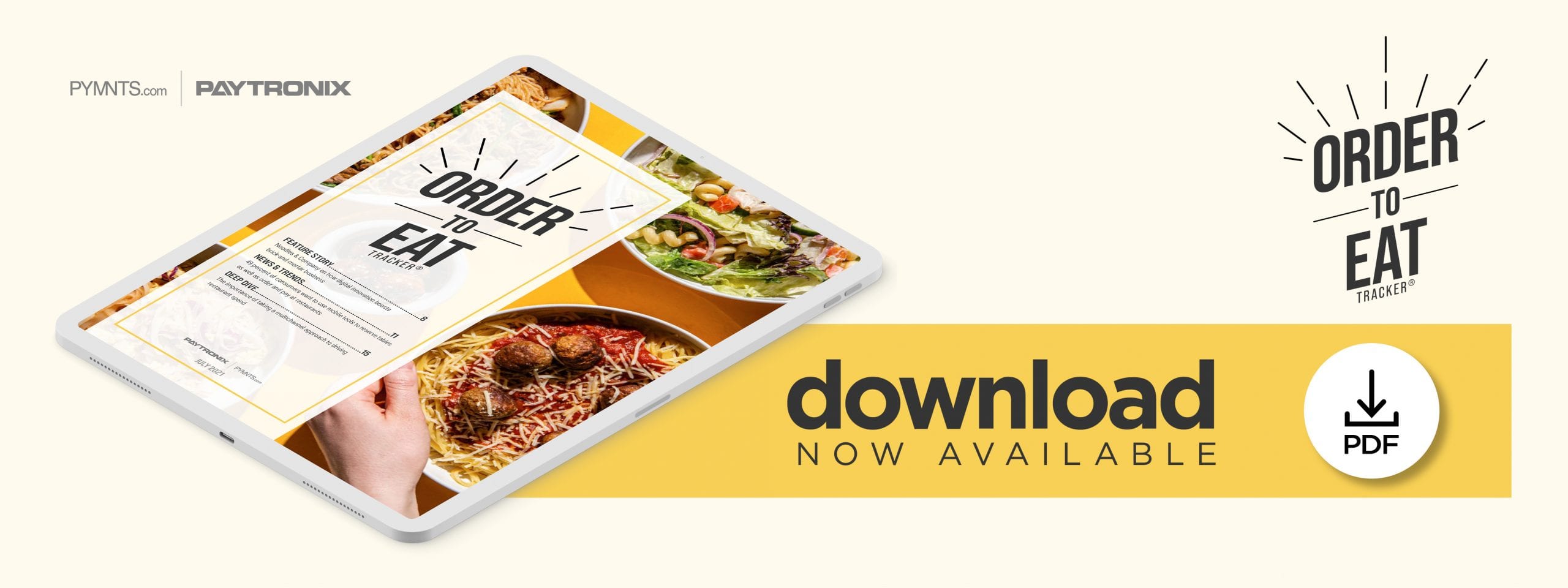Noodles & Company On How Digital Innovation Boosts Brick-And-Mortar Business

Dining in is back on the menu at many quick-service restaurants (QSRs), but digital ordering and payment options are still playing a major role in their operations. In the Order To Eat Tracker, Brad West, chief operating officer at Noodles & Company, explains how innovations like contactless payments and ordering are playing a key role in driving sales across all channels.
Quick-service restaurants (QSRs) were forced to adapt overnight to a meteoric rise in mobile and online ordering as the COVID-19 pandemic shuttered dining rooms and customers sought safe, convenient ways to get their favorite meals. One PYMNTS report, done in collaboration with Paytronix, found that 92 percent of vaccinated consumers plan to continue to use mobile order-ahead, curbside pickup and delivery in the future as often as they do now. This shift has highlighted the importance of embracing an omnichannel marketing approach as consumers increasingly expect consistent experiences across channels, both digital and in-person.
Eateries that improve omnichannel dining experiences not only help meet consumers’ heightened expectations but also can keep their own bottom lines healthy, according to Brad West, chief operating officer of Colorado-based fast casual restaurant chain Noodles & Company. West told PYMNTS that by committing to continued digital innovation, his firm aims to remain stable despite the changing economy and state of the restaurant industry.
More than half of the company’s sales were already made through to-go and delivery services prior to the pandemic, with the chain offering to-go service at its more than 450 nationwide locations. But once the health crisis struck, the company expanded services to include curbside pickup and delivery through its mobile app and website. It also augmented its relationships with third-party delivery services, like DoorDash and Uber Eats, and added Apple Pay as a contactless payment option. The additional features helped the chain leverage the to-go platform, he said.
“We were already focused on adding more off-premises options pre-pandemic, so we felt uniquely situated to transition to a digital-focused business during the height of the pandemic,” West said.
Driving Sales With Expanded Menu, Delivery Options
Many restaurant chains including Noodles & Company are harnessing digital innovations to drive sales at brick-and-mortar locations. The surge in popularity of curbside pickup and delivery options prompted the company to expand its menu to include family meal options and make it possible for guests to grab their orders without leaving their vehicles, West said. He expects that digital innovations will continue to fuel sales and increase the number of customers as consumers return to dining in.
“There is no doubt the pandemic altered the fast casual dining experience for all companies,” he said. “However, we strive to make every experience notable for our guests, so we’re constantly innovating our menu, listening to consumer wants and needs and incorporating globally inspired ingredients.”
Navigating Third-Party Relationships
One obstacle that remains to fuller use of digital options is third-party delivery fees. Many restaurant operators said that while DoorDash, Uber Eats and Grubhub have been lifesavers for the sector, these third parties’ high fees have made recovery more challenging than necessary. In response, U.S. and Canadian lawmakers agreed to temporarily cap the fees that such services can charge restaurants, and DoorDash reported that it lost $36 million in Q4 as a result of the fee caps in 73 U.S. cities.
Kevin Huang, vice president of merchant operations at DoorDash, said while he understands the urge to protect restaurants, if the San Francisco-based company raises fees to diners to recoup lost revenue, fewer people will order. He also cited the growing pains in the relationship between restaurants and delivery companies and the former’s reliance on the services.
Working with these services and dealing with the accompanying fees are hurdles that await a solution for many restaurants still looking to bulk up their sales as the industry slowly revives. Building their own websites may be one answer, and Huang said his company is trying to establish trust by educating restaurants about this option so they can bypass some DoorDash fees. For now, these pain points appear to be necessary in helping to support the omnichannel dining experiences that customers crave.

